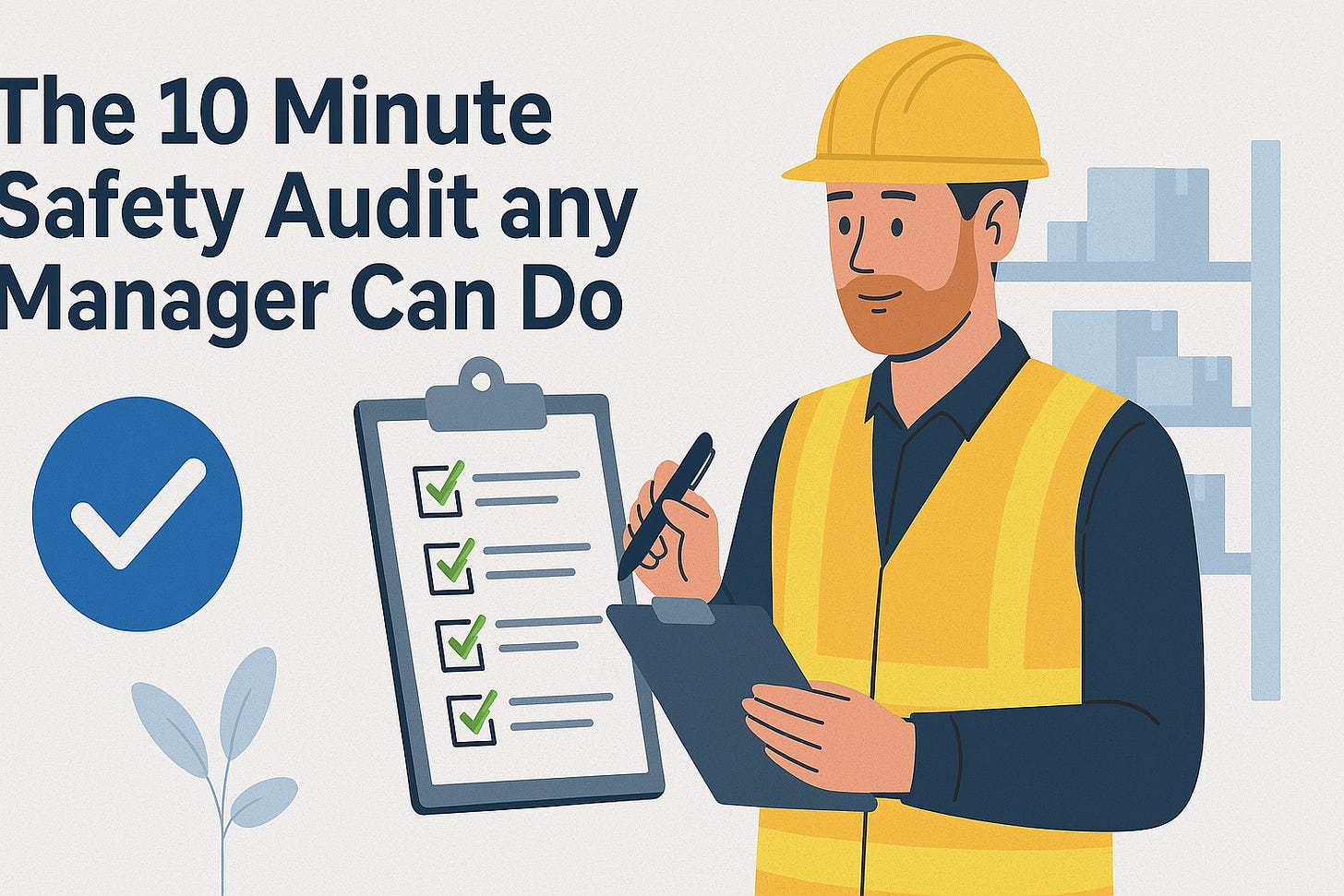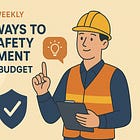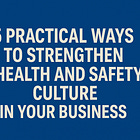The 10-Minute Safety Audit Any Manager Can Do
Hello and welcome to this week’s edition of Safety Pro Weekly.
Most managers know they should keep a close eye on safety hazards in their workplace, but often it falls through the cracks because they simply don’t have time for long inspections.
Font line managers are the busiest people in any company. There are orders to be filled, paperwork is piling up and someone’s always complaining about something and they seem to think it’s the manager’s job to fix it.
While many understand the importance of workplace safety and want to make sure their workers go home at the end of the day without injuries, they simply don’t have time to give safety the attention it requires.
If you can relate to these ideas, you should know that there is a better way.
In this article:
Most managers don’t have time for in-depth safety inspections on a regular basis, but a quick 10 minute walk-through can spot the most glaring errors.
Follow these 5 steps: Walk the floor, Check equipment and tools, Engage with workers, Check documentation and signage and have an eye for housekeeping.
While this doesn’t replace the need for in depth safety inspections, regular walk-throughs with an eye for safety hazards keeps safety on the radar and builds good habits for you an your team.
While there is definitely a time and place for comprehensive, in-depth safety audits, there are simple, quick checks that you can do daily to keep things from getting too far out of hand. A simple basic safety check up doesn’t have to take all day yet it can still spot potential hazards and prevent incidents.
Here’s a checklist they can do in just 10 minutes that covers the most common risk points. If you can spare a coffee break, you can improve safety in your workplace.
Step 1: Walk the Floor
Get in the habit of walking the shop floor regularly.
This doesn’t have to be a separate task from your regular work, you can incorporate it into your normal activities. As you’re touring the shop floor, spare dome attention for the following.
Look for obvious hazards. Blocked exits, spills, tripping hazards, emergency equipment such as fire extinguishers or first aid kits that are not readily accessible.
Check that PPE is being worn as required. It will be quickly obvious if workers are not wearing PPE in designated areas. A quick reminder will get them back on track.
Pay attention to ergonomic mistakes. Workers often get used to doing things a certain way because “it’s easier”. If you notice someone having to use excessive force, lifting with an awkward posture or using a knife incorrectly, pointing it out can save the worker a trip to the ER.
Step 2: Equipment and Tools
While you’re on the shop floor, take a minute to spot check one or two pieces of equipment.
Are all machine guards in place, cords intact, machines in good repair? Are lockout/tagout procedures being observed where required? Are they being used according to specifications?
While you won’t catch everything at a glance, a quick look can spot the obvious and it beats waiting until maintenance reports come in.
Step 3: Worker Engagement
As you go about your tour, ask one or two employees if they have everything they need to do the job safely.
Sometimes even just a question about their day or a random topic can open up the conversation. People don’t always want to talk about work, take an interest in their day to day, ask how their weekend went, maybe comment on last night’s game.
The key is opening up the conversation, which allows you listen for gaps, stressors your worker may be dealing with or a concern they may have. Being available gives them a chance to bring up safety concerns while building trust and relationships with your team.
Step 4: Documentation/Signage
Take a quick moment to look for required postings and documentation.
Make sure your safety board is up to date, SDS sheets are available and emergency lights and access routes are posted, visible and in good working order.
It’s especially important to look for clear signage where risks exist, for example, forklift lanes, high voltage areas or high noise environments.
Step 5: Housekeeping / Final Sweep
Finally, as you head back to the office, pay attention to the general housekeeping and orderliness of the shop floor.
Make sure materials are stored properly, without unnecessary clutter, and chemicals and other items are stored where they should be.
A clean, organized, workplace is a safer workplace and contributes to a professional atmosphere and culture.
This isn’t a full inspection, but it’s an important way to show visible leadership and keep safety on the radar for yourself and your team.
Regular check-ins build good habits and keep the bad ones from getting out of control without requiring an unreasonable amount of time.
Ten minutes now can prevent hours lost due to injury down the road.
That’s it for this week, let me know in the comments if you have additional ideas for quick safety checks that save time and keep safety on the radar.
Safety Pro Weekly is published every Tuesday on LinkedIn and Substack.
Cheers,
Dan.






